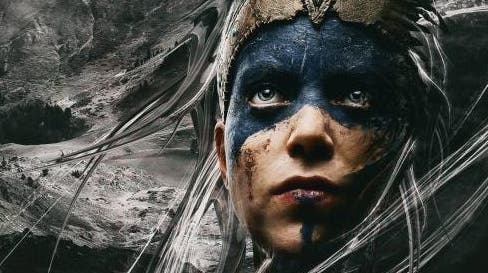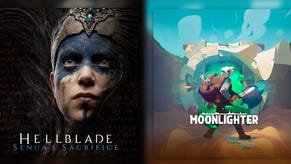Does Hellblade on Xbox One X deliver the definitive console experience?
And how well does the standard console hold up?
Built on a relatively low budget compared to the triple-A heavyweights, Hellblade: Senua's Sacrifice still impresses as one of the generation's most striking games. Miraculously, a core team of 14 people at Ninja Theory created something greater than the sum of its parts - marrying beautiful art direction with Unreal Engine 4's cutting-edge feature-set. It certainly impressed on PS4 and PC when it debuted in late 2017, and with the recently released Xbox One X version, we have the best console version of the game bar none.
It's also a highly accomplished tech showcase across all platforms. With titles likes Heavenly Sword and Enslaved on the studio's CV, it's no surprise that motion capture plays a big part in Hellblade's storytelling. It quite literally screams at you from the start, though adds a crucial element of humanity to the script. Each grimace and cry of the lead actress is keyed in - synchronised with her body movements - using a camera as a reference point. It's one half of the process to bringing Senua to life, the other being the high level of detail applied to her character model.
Indeed Senua's design is clearly a labour of love for the studio. Physics-based elements dangle from her body rig - from the accessories to a mass of dreadlocked hair - all reacting to the original motion capture or player input. Meanwhile a process of photogrammetry is used to map every wrinkle, pore and streak of cracked paint across her skin. Even clothing is based on real-life materials for fur and leather. It's scanned in to make realistic, physically-based lighting possible within the engine, interplaying with the light shafts and bonfires across the world. The combined result is eerily realistic - even if Senua's eyes do veer towards the uncanny valley in some close-ups, this approach still feels authentic enough to tell the grounded story Ninja Theory is gunning for.
If Senua is the leading role, the Norse-inspired environment plays a great supporting part. Hellblade's art design was given a priority - environments being built first to the artist's vision, and where gameplay systems followed. The ordering of priorities is evident everywhere you look. Each angle of Ninja Theory's haunting world is picturesque, and even if assets are subtly reused between areas, the post-process pipeline helps disguise it well. Tricks like chromatic aberration and film grain are present, but there's also tone-mapping that changes the mood entirely as you move from one area to the next.
Hellblade is a sensational showcase not just for Ninja Theory's talents, but also the underlying Unreal Engine 4 technology. It's also a demanding title (on PC at least), so we were eager to see just how far Xbox One X can take the experience, and how both Microsoft's console flagship and its base model can handle the game. The basics are this: both Microsoft consoles use temporal anti-aliasing and a form of dynamic resolution scaling - just like the PS4 and PS4 Pro releases. All that, combined with the post effects, makes pixel testing this game rather tricky, but the final numbers are impressive. The base Xbox One's top native resolution is 1600x900, and it does a reasonable job of holding that. It's a cut from the standard PS4's maximum 1080p of course, but given how thoroughly Ninja Theory's AA covers up the rough edges, it doesn't stand out massively.
The other big news here is the game runs at 30fps with a surprisingly tight lock - based on an initial test at least. You don't get the extra 60fps performance mode on Pro or Xbox One X here, but we are talking feature parity with PS4 in that sense. Plus, since our last analysis of Hellblade, thankfully these versions now cap properly at 30fps rather than letting it wander over - making it feel smoother overall. So, you get served a straight 900p at 30fps, with the occasional dropped frame here and there - but that's a fair deal on Xbox One. Comparisons with Xbox One X are s touch sobering meanwhile; you get lower grade textures on base machine, while the demanding foliage and shadow settings are also reined in.
More interesting is how Xbox One X version offers additional functionality over PlayStation 4 Pro. The Sony platform features two modes, which essentially prioritise 60fps or target a 1440p resolution. Xbox One X ups the ante here with improvements on both presets. The performance mode does a good job of sustaining 60fps, and does so with a resolution delta that generally sits between 1080p and 1296p (though in very rare cases, it drops to 720p). That's up against Pro with a 720p to 1080p variance, with more of a bias to the lower end, while for its part, X generally settles closer to full HD resolution.


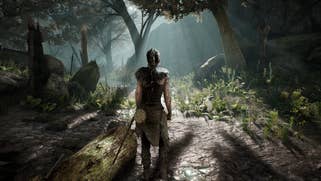

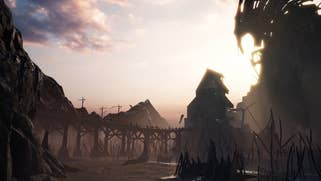
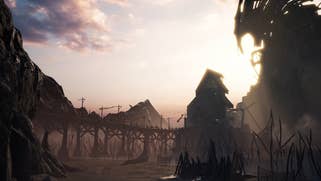

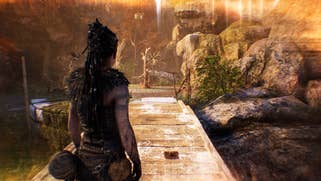

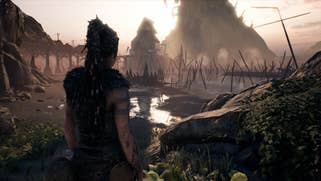
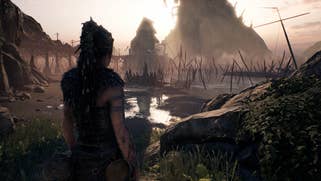

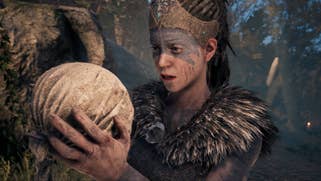
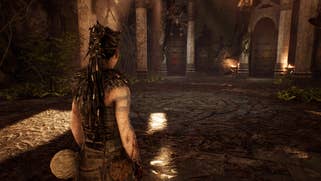

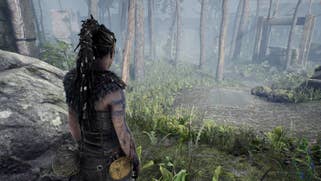
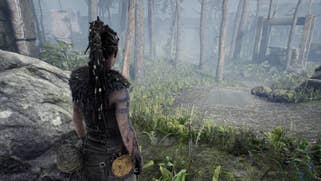
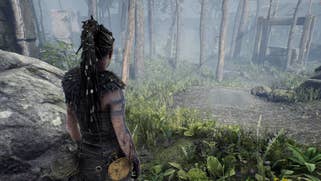
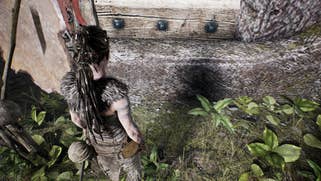


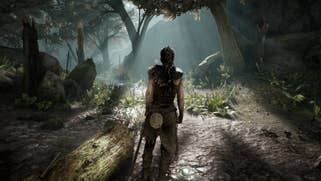
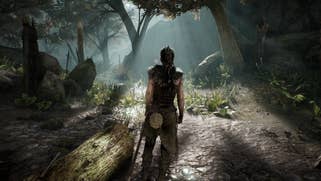
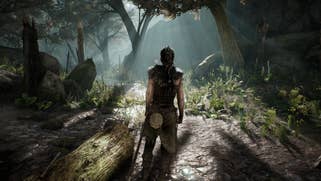
Next, there's the resolution and enriched modes on Xbox One X, each of which add a straight 30fps cap. Ninja Theory promises resolutions typically lower than 4K for the enriched mode, albeit with the best visual settings for shadows and foliage. The max result on each does come in at 3840x2160 at the absolute peak - though it's obviously less common on the enriched variant. The opening coastline area, for example, runs at 3072x1728 on the enriched mode, giving us 80 per cent on each axis of full ultra HD resolution. It's a faintly visible cut in image quality from the high resolution mode, which hits 3328x1872 in that very same scene - or 86 per cent for reference.
This may well go lower in later chapters, but as a comparison point it's a telling gap, and shows the difference in priority. Either way, both modes here best PS4 Pro's only 30fps playback option, which runs between 900p-1440p. For Xbox One X, the enriched mode ultimately gives us the closest comparison point to the settings used on Sony's enhanced machine - in terms of shadows, foliage and level of detail. Our advice would honestly be to skip the high resolution mode altogether; it doesn't quite hit a native 4K and it loses out on a lot of neat extras.
So what are the differences between X's enriched and high resolution modes? A big point is geometry level of detail, with draw distances pushed out in the former. Pop-in is less prevalent as a result, with everything filled in ahead of time. Effectively Ninja Theory is making a simple trade here of resolution for detail and thanks to UE4's temporal AA and post-heavy rendering features, it makes the drop in pixel count easy to absorb. Foliage density and shadow quality are two other major upgrades for the enriched setting, and it's interesting to note that the performance mode uses similar foliage settings as the high res mode, despite running at a much lower pixel count.
All told, for our money, enriched is the way to go on X hardware if you're targeting the best experience at 30fps. It may not run at native 4K most of the time, but it makes up for it in visual tweaks and extras you really wouldn't want to miss. What is fascinating is how Ninja Theory has tailored the experience for each platform. PS4 Pro's 30fps mode may top out at 1440p, but it actually seems to resolve higher quality shadows than the X, while Microsoft's machine delivers more pixels and improved draw distance. In performance terms, there's very little to differentiate the two here, with both delivering a solid 30fps. Switching to the 60fps mode meanwhile, X is the clear winner, benefiting from obvious frame-rate improvements we've highlighted in the video embedded on this page.
By and large, Ninja Theory has done a good job with the 60fps option on Xbox One X - it's much smoother than most of the 'performance' modes available on the enhanced consoles, but there is one problem: severe frame-time spikes that kick in while moving between larger areas, producing stutter we measured at up to 240ms - effectively a quarter of a second. It doesn't feel great, and applies to both X and Pro in the same spots. Really the 30fps playback modes pave over these issues by raising the threshold render time - an advantage if you're sticking to a lower rate. Otherwise, if it is 60fps you're after, the Xbox One X again has dominion in that quarter.
Another advantage for the Microsoft platform is HDR support. Both Xbox One consoles offer it, while the PS4 doesn't at present - and it's a handsome extra. The visual style of the game is a great match for the technology with some striking effects. Whether it's the crimson reds on blood stains, the gradients of light across fire, and especially those beautiful streaks of light - colour depth is added across the board, and the effect is compelling. Hopefully, this feature will be do the rounds on Sony's machines at some point.
Ultimately, it's been something of an extended wait for Hellblade to arrive on console, but Ninja Theory has delivered an excellent port. A demanding game looks good and runs nicely on the standard Xbox One, while the X benefits from a new rendering mode, enhanced resolution and an improved performance mode. Arriving in tandem with Ninja Theory's stunning haul of five BAFTAs for the title, the Xbox port offers a great jumping on point for an excellent game, if you've not yet experienced it.
